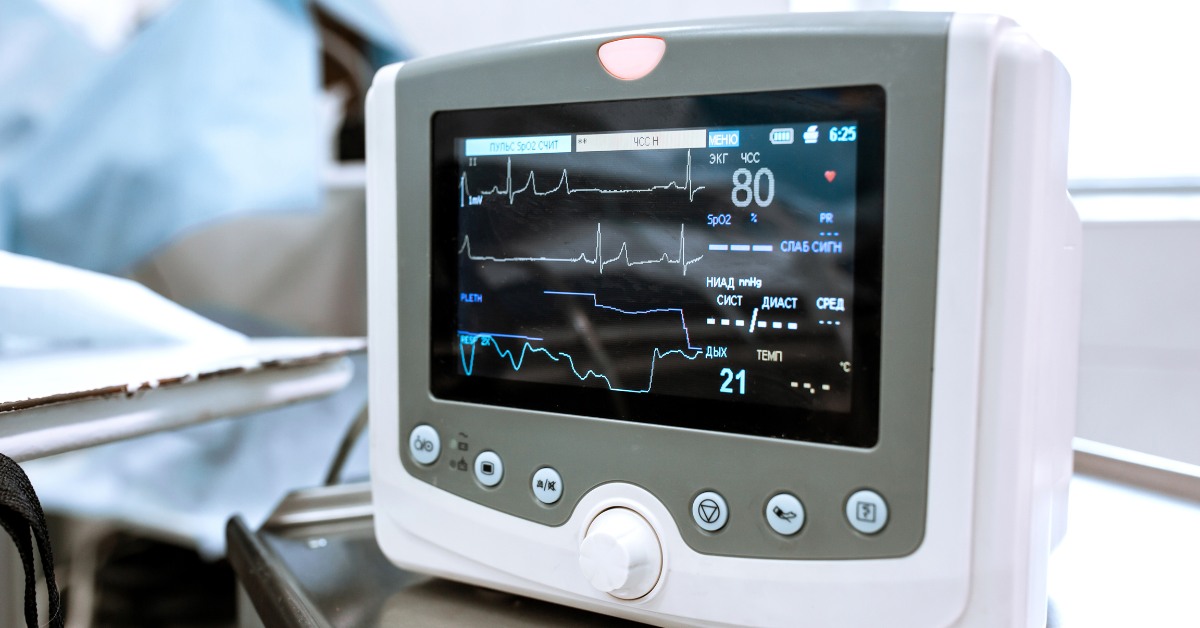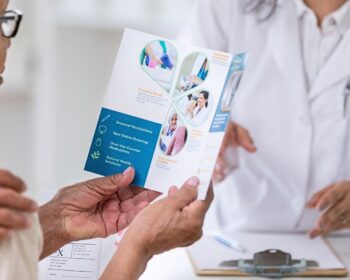The European Union has taken a significant step forward with the introduction of the Medical Device Regulation (EU) 2017/745 and the In Vitro Diagnostic Regulation (EU) 2017/746. These regulations not only bring about changes in the classification of devices but also introduce transition periods to facilitate a smooth adjustment for manufacturers, healthcare professionals, and regulatory bodies alike.
In this blog post, we will provide a comprehensive overview of the changes in medical device and in vitro diagnostic (IVD) device classification, as well as the transition periods under the MDR and IVDR.

What does the medical device and IVD class change mean?
The MDR and IVDR have overhauled the classification system for medical devices and in vitro diagnostic devices, aiming to better align regulatory requirements with technological advancements and patient safety considerations.
While the fundamental risk-based classification ranging from Class I (lowest risk) to Class III (highest risk) for medical devices remains, the IVDR introduces its own risk-based classification for IVDs, categorised from Class A (lowest risk) to Class D (highest risk). These classifications take into account not only the inherent risk of the device but also its intended purpose and role in patient diagnosis or treatment. Additional factors, such as the device’s intended use, the importance of the information it provides for clinical decisions, and its potential impact on public health, now play a more significant role in determining the classification under both the MDR and IVDR.
For manufacturers, this means a comprehensive reassessment of their product portfolios. Devices previously categorised as lower risk under the previous directives might find themselves reclassified under MDR and IVDR. This shift necessitates a thorough understanding of the new regulatory landscape. and a commitment to meeting updated harmonised standards.
How are medical devices and IVDs classified?
MDR Classification (Medical Devices)
The MDR classification is primarily risk-based, ranging from Class I (lowest risk) to Class III (highest risk), with the risk level determined by factors such as the intended purpose of the device and its duration of contact with the body.
- Class I: Devices with low risk to the patient and/or user. Examples include non-invasive devices like bandages, reusable surgical instruments, manual stethoscopes, corrective eyeglasses, manual wheelchairs, and thermometers.
- Class IIa: Devices with a low to medium risk. Examples include hearing aids, nasal sprays, dental crowns, and ultrasound machines intended for physical examination.
- Class IIb: Devices with a medium to high risk. Examples include lung ventilators, infusion pumps, surgical lasers and vaginal creams, gels, and suppositories.
- Class III: Devices with the highest risk, often those that are implanted or sustain life. Examples include heart valves, breast implants, implantable pacemakers and joint replacements.
IVDR Classification (In Vitro Diagnostic Devices)
The IVDR also adopts a risk-based classification system, but for in vitro diagnostics, the categories range from Class A (lowest risk) to Class D (highest risk), with risk assessments considering factors such as the public health risk and the risk to the individual.
- Class A: Devices with the lowest risk, such as products for general laboratory use suitable for in vitro diagnostic procedures and instruments intended for in vitro diagnostic procedures.
- Class B: Devices with a low to moderate risk. Examples include pregnancy self-tests, blood glucose monitoring systems for home use, and CRP tests.
- Class C: Devices with a moderate to high risk. Examples include HIV blood tests, Hepatitis B and C tests, prenatal screening tests for Down syndrome and detection of sexually transmitted agents.
- Class D: Devices with the highest risk to public health and individual patients. Examples include assays for detecting blood-borne viruses and high-risk infectious agents like HIV or Hepatitis C, intended for blood screening in blood banks. Another example is ABO and Rhesus blood grouping in blood banks.

Practical examples of classification changes
Medical Device Example: Substance-Based Medical Devices
- Under MDD: Many substance-based medical devices were classified as Class I. These devices include, for instance, certain types of wound care products impregnated with substances intended to help the wound healing process. Class I devices could be self-certified by the manufacturer without the need for a notified body assessment.
- Under MDR: These same substance-based medical devices are often reclassified as Class IIa or higher under the MDR. The reclassification is due to a greater emphasis on the potential risks associated with the pharmacological, immunological, or metabolic action of the substances within these devices. As a result, manufacturers of these previously Class I devices must now undergo a more rigorous conformity assessment process involving a notified body.
In Vitro Diagnostic (IVD) Example: IVD Assays/Reagents
- Under IVDD: Most IVD assays, including reagents for diseases like HIV, could be self-certified by the manufacturer under the IVDD, which allowed a significant number of IVDs to enter the market without direct oversight from a notified body. Only a limited set of high-risk IVDs required notified body involvement.
- Under IVDR: The IVDR introduces a new risk-based classification system for IVDs, significantly expanding the role of notified bodies. All IVD assays and assay specific reagents are reclassified as class B or higher under the IVDR. For example IVD assays and reagents for infectious diseases, such as HIV, are classified as Class C under the IVDR. This reclassification to class B or higher necessitates a conformity assessment by a notified body, including more stringent pre-market and post-market requirements compared to the IVDD. The change reflects a heightened concern for public health and the accuracy of diagnostic information provided by IVD assays.
Transition periods for medical devices and IVDs
Recognising the challenges posed by the introduction of new regulations, both MDR and IVDR include transition periods to allow manufacturers and other stakeholders time to adapt. These transition periods are designed to offer a grace period during which devices that were previously certified under the old directives can continue to be placed on the market, allowing manufacturers additional time to ensure their devices meet the updated regulatory standards.
MDR Transition Period Details
The MDR officially came into effect on May 26, 2021. Initially, a general transition period was set to end on May 26, 2024, allowing manufacturers three years to update their technical documentation and conform to the new regulations. However, recognising ongoing challenges, including the impact of the COVID-19 pandemic, the European Commission extended the deadlines for certain product classes. As of the latest updates:
- Class I devices (reclassified under MDR requiring a notified body) have until 31 December 2028 to comply if the declaration of conformity was drawn up prior to 26 May 2021.
- Higher-risk class devices (IIa, IIb, and III) which already required notified body certification under MDD can utilize the transition periods if they have certificates issued by notified bodies that were still valid on 26 May 2021 and expired before 20 March 2023 if one of the following conditions is fulfilled:
- Before the date of expiry of the certificate, the manufacturer and a notified body have signed a written agreement for the conformity assessment of the device covered by the expired certificate or of a device intended to substitute that device, or
- a competent authority of a Member State has granted a derogation from the applicable conformity assessment procedure or has required the manufacturer to carry out the applicable conformity assessment procedure.
- The transition periods for the above mentioned devices are until:
- 31 December 2027, for all class III devices, and for class IIb implantable devices except sutures, staples, dental fillings, dental braces, tooth crowns, screws, wedges, plates, wires, pins, clips, and connectors.
- 31 December 2028, for all other class IIb devices, for class IIa devices, and for class I devices placed on the market in sterile condition or having a measuring function.
- Devices may be placed on the market or put into service until the dates referred to above only if the following conditions are met:
- the devices continue to comply with the MDD, as applicable,
- there are no significant changes in the design and intended purpose of the devices,
- the devices do not present an unacceptable risk to the health or safety of patients, users, or other persons, or to other aspects of the protection of public health,
- no later than 26 May 2024, the manufacturer has put in place a quality management system in accordance with the MDR,
- no later than 26 May 2024, the manufacturer or the authorised representative has lodged a formal application with a notified body for conformity assessment in respect of the device or a device intended to substitute that device, and, no later than 26 September 2024, the notified body and the manufacturer have signed a written agreement.
- The devices covered by the transitional period must follow the requirements of the MDR relating to post-market surveillance, market surveillance, vigilance, and registration of economic operators and devices.
IVDR Transition Period Adjustments
The IVDR transition began on May 26, 2017, with a full application date initially set for May 26, 2022. However, to address concerns about the readiness of the industry and the availability of notified bodies, the European Commission introduced a staggered transition timeline based on device class:
- Certificates issued by notified bodies in accordance with the IVDD prior to 25 May 2017 remain valid until the end of the period indicated on the certificate, except for certificates issued in accordance with Annex VI to IVDD which become void at the latest on 27 May 2025.
- Certificates issued by notified bodies in accordance with the IVDD from 25 May 2017 onwards become void by 27 May 2025.
- Devices described below may be placed on the market or put into service until the dates described below, provided that the devices continue to comply with the IVDD, and that there are no significant changes in the design and intended purpose of those devices.
- Devices with a certificate that was issued in accordance with the IVDD, and which is still valid, may be placed on the market or put into service until 26 May 2025.
- Devices for which the conformity assessment procedure pursuant to IVDD did not require the involvement of a notified body, for which a declaration of conformity was drawn up prior to 26 May 2022, and for which the conformity assessment procedure pursuant to the IVDR requires the involvement of a notified body, may be placed on the market, or put into service until the following dates:
- 26 May 2025, for class D devices,
- 26 May 2026, for class C devices,
- 26 May 2027, for class B devices, and
- 26 May 2027, for class A devices placed on the market in a sterile condition.
- The devices covered by the transitional period must follow the requirements of the IVDR relating to post-market surveillance, market surveillance, vigilance, and registration of economic operators and devices.
Regulation changes bring challenges to medical device and IVD manufacturers
Despite the well-intentioned transition periods, challenges are abounded for manufacturers. Additionally, the evolving nature of technology and medical advancements means that some devices may face reclassification during the transition period, adding an extra layer of complexity.
Manufacturers must stay informed about the changing landscape to make informed decisions regarding device selection and usage. The transition period serves as a critical time for manufacturers to engage with notified bodies, update their technical documentation, and ensure a seamless shift to compliance with the new regulations.
The changes in medical device classifications, coupled with transition periods, necessitate a collaborative effort from manufacturers, healthcare professionals, and regulatory bodies. Embracing the challenges and opportunities presented by these regulatory shifts will pave the way for a more secure, innovative, and patient-centric future for the medical device industry.
If you are an economic operator and currently have devices that are compliant with the directives, or if you wish to introduce new devices under the MDR/IVDR, now is the time to act. The Medfiles Medical Device team is happy to assist you and your company in preparing for the amendments to the MDR and IVDR.


